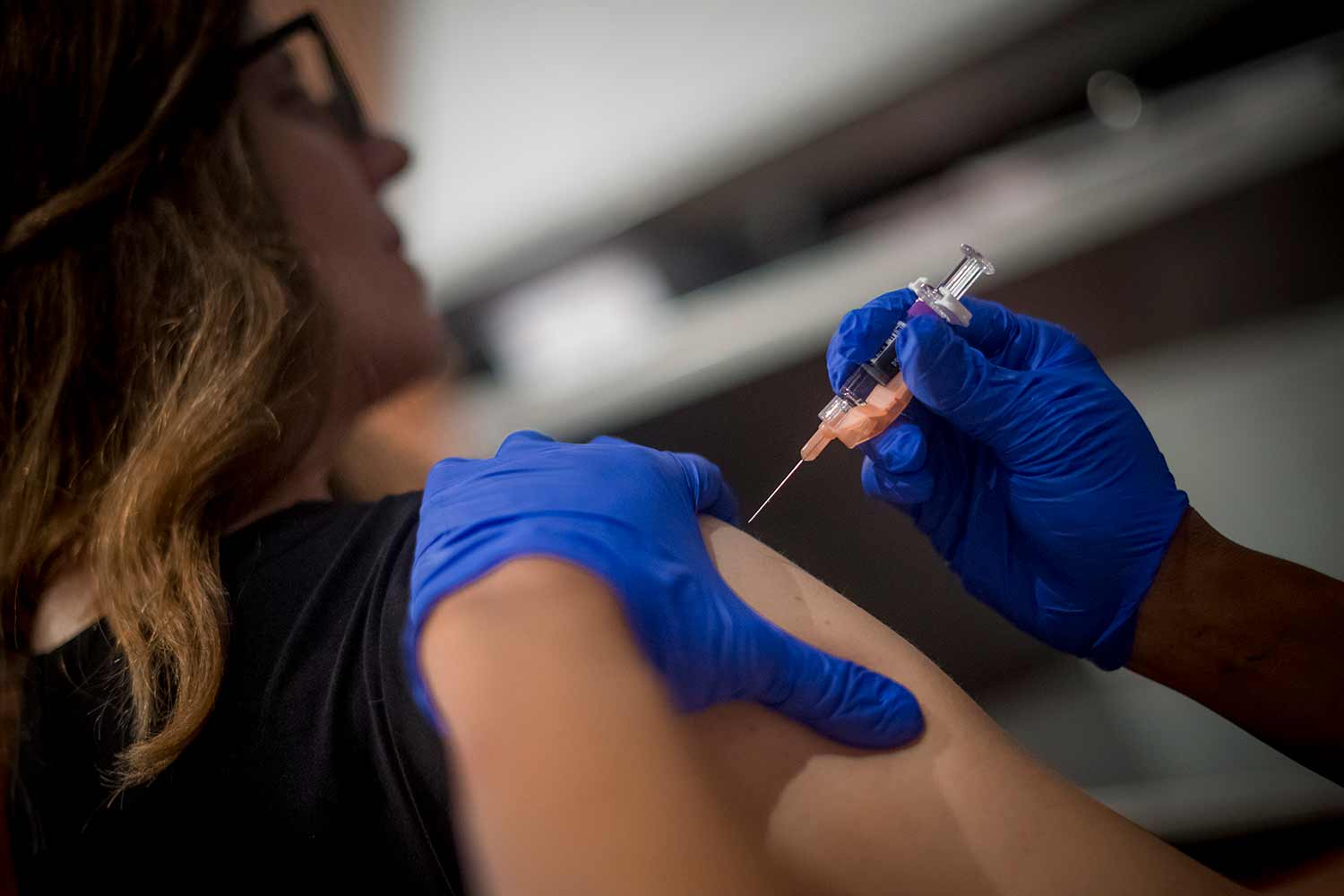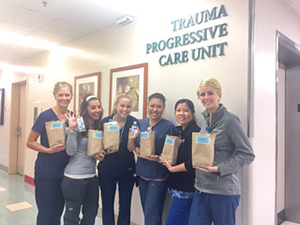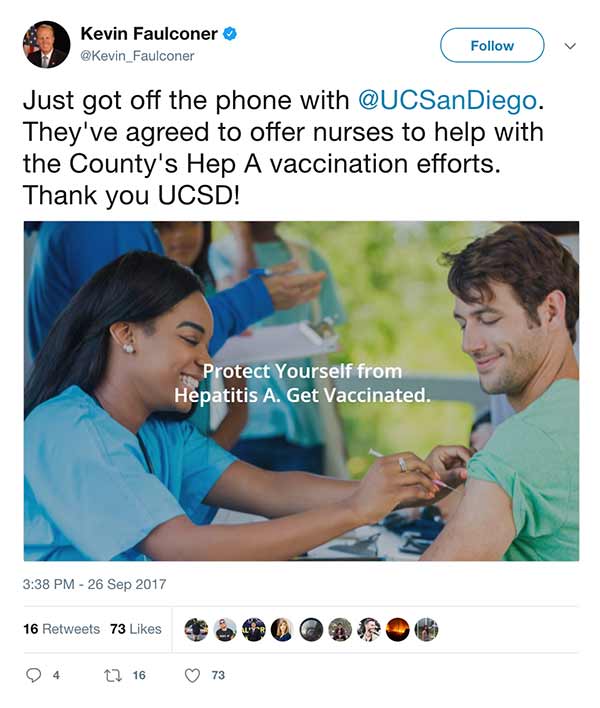
By:
- Heather Buschman
Published Date
By:
- Heather Buschman
Share This:

A UC San Diego Health employee receives a flu vaccination at the flu and hepatitis A drive. Photo by Erik Jepsen/UC San Diego Publications
At the Front Lines of San Diego’s Hepatitis A Outbreak
San Diego County is in the midst of an outbreak of hepatitis A, a viral infection spread person-to-person and through contact with fecally contaminated objects or food. As of earlier this week, more than 490 people have been infected and 18 have died.
UC San Diego Health physicians, nurses and staff are at the forefront. Since March 2017, 121 patients were diagnosed with hepatitis A at UC San Diego Health.
“In addition to treating hepatitis A patients who come to us, our goal is to identify and vaccinate as many people as we can who may be at increased risk for this infection,” said Randy Taplitz, MD, clinical director of the Division of Infectious Diseases at UC San Diego Health. “To that end, we’re working closely with San Diego County and City and we’ve implemented hepatitis A education and vaccination programs throughout our health system and community locations.”
In the past three months, UC San Diego Health staff have vaccinated more than 2,245 community members and 1,710 UC San Diego Health employees. They are also distributing information and hygiene kits to patients who need them.
The current outbreak has predominantly affected people who are homeless or use illegal drugs, and these groups are now considered at highest risk for the infection.
For Danisha Jenkins, nurse manager of the Trauma Progressive Care Unit at UC San Diego Medical Center in Hillcrest, this outbreak hits especially close to home. In a typical week, her department treats eight to 10 patients who are homeless.
“Part of being a nurse is not just caring for the illness or injury of the moment, but taking a holistic approach to understanding your patient’s issues, challenges and risks when they leave the hospital,” Jenkins said. “In recent months, the high risk of hepatitis A has become one of those issues for many of our patients.”
Early in the outbreak, Jenkins proactively reached out to the San Diego County Health and Human Services Agency to see what resources were available. They provided Jenkins’ team with free hygiene kits, which they are now being given to at-risk patients. The kits contain hand-sanitizing cloths, fresh water, hand sanitizer, waste bags and information sheets that list the symptoms of hepatitis A and where people should go if they experience them. The team has also been offering hepatitis A vaccines to their patients.

(L-R): UC San Diego Health nurses Misty Andersen, Mandi Bertl, Stephanie Chmielewski, Deanna Scott, Grace Nasi and Danisha Jenkins holding hygiene kits provided by San Diego County. They distribute these kits to their patients at high-risk for hepatitis A infection.
“Our patients have been very thankful for the information and the opportunity to get vaccinated—for many homeless people, especially those with mental illnesses, they don’t know about the outbreak or what they can do, and they don’t always have the means to get vaccinated elsewhere,” Jenkins said.
Similar education and vaccination efforts are being offered to appropriate patients at UC San Diego Health’s Emergency Departments, urgent care facility, ambulatory clinics and influenza vaccination drives, as well as at the School of Medicine’s two Student-Run Free Clinics, which serves many homeless and other high-risk patients.

There is little research on hepatitis A. Naveen Gara, MBBS, a hepatologist at UC San Diego Health, said that’s likely because, for most healthy people without underlying health conditions, the infection runs its course and the virus is cleared without long-term health effects. That makes it different than hepatitis B or C, which are chronic diseases caused by different viruses.
According to Taplitz, the San Diego hepatitis A outbreak has not yet peaked, and is expected to continue for several months before it’s over.
“As an academic health system and a public institution, we have a long history of caring for the region’s most vulnerable patients and underserved populations, and we will continue to do so,” she said.
Share This:
You May Also Like
Stay in the Know
Keep up with all the latest from UC San Diego. Subscribe to the newsletter today.


